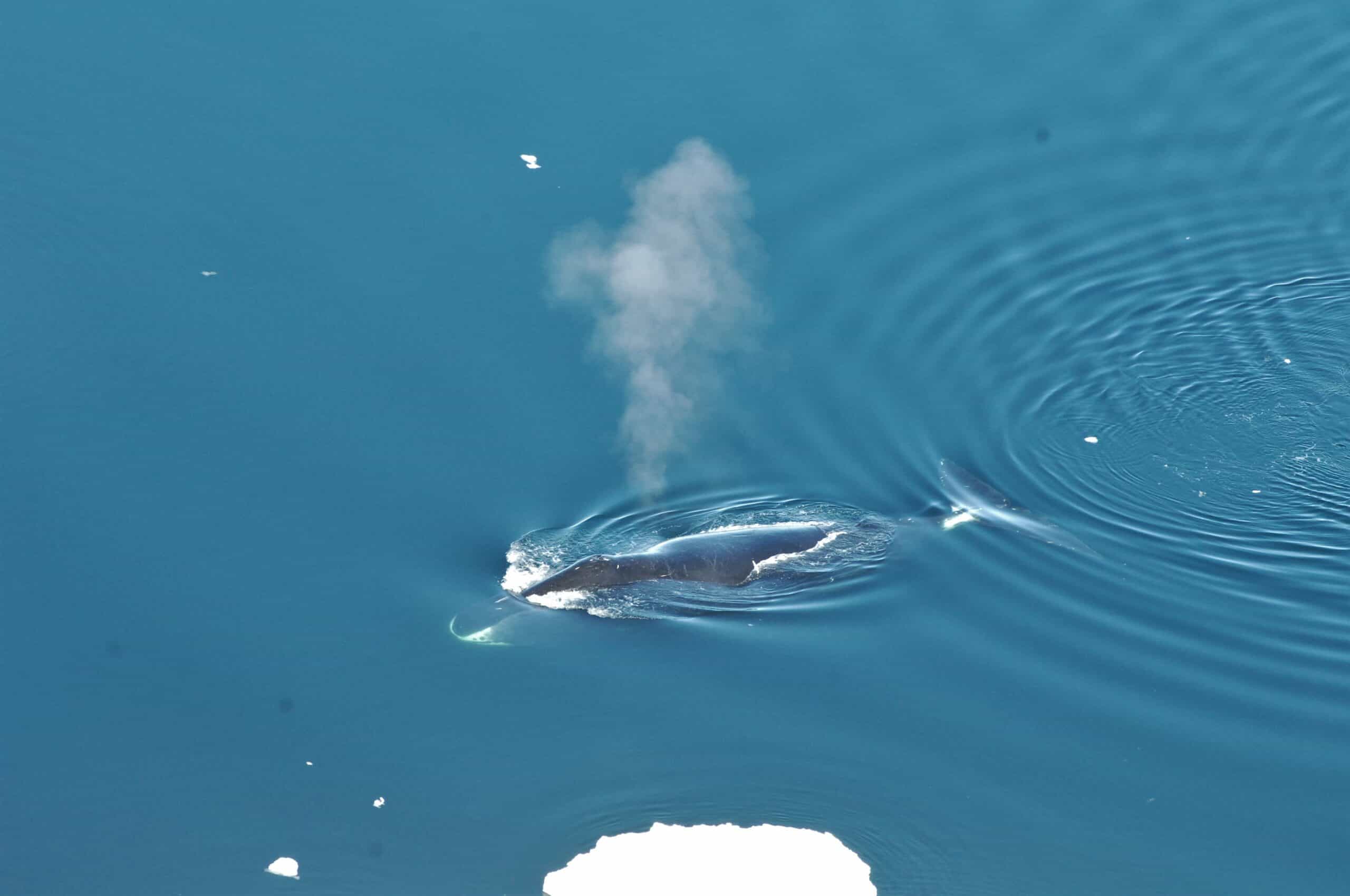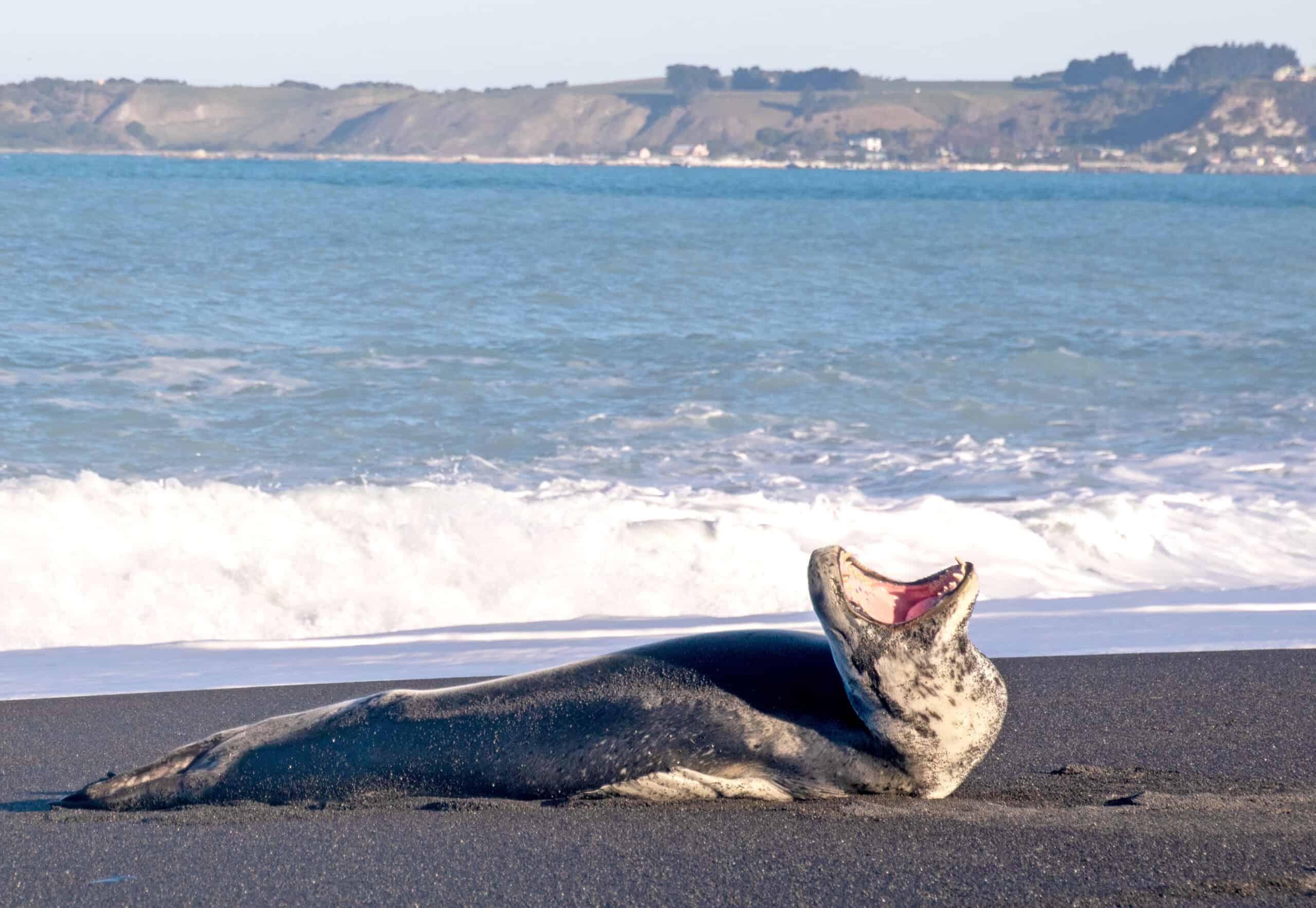Share this article
Wildlife Featured in this article
- bowhead whale
Bowhead whales change migration with loss of sea ice
Some bowhead whales are staying in the Chukchi Sea instead of migrating
Listening to bowhead whales under water, researchers found the marine mammals are changing their migration route as Arctic sea ice declines. The change has put them on a collision course with killer whales, which have been shifting their ranges, too.
As a PhD student at Scripps Institution of Oceanography, Angela Szesciorka had been using passive acoustic monitoring—using underwater microphones to record sounds in the water—for a study on blue whale migration in Southern California. She had always been fascinated by bowhead whales (Balaena mysticetus), though, so she decided to use the skills she gained off the California coast to track whales in the Arctic.
From traditional ecological knowledge and satellite tag data, researchers knew that bowhead whales spend their winters in the northwestern Bering Sea, then migrate northward in the spring to summer in the Beaufort Sea. During the fall, the whales pass through the Chukchi Sea on their way back.
Szesciorka and her colleagues wondered if retreating sea ice in the Arctic was impacting these migration patterns. In a study published in Movement Ecology, she and her team deployed passive acoustic monitoring instruments on oceanic moorings from large research vessels. The moorings stay on the floor of the Chukchi Sea for a year and collect all the sounds in the ocean using hydrophones, or underwater microphones. “We have to get them back to get the data and so that we can look at and listen to the sounds later,” said Szesciorka, a researcher at Oregon State University. Then, they look at spectrograms of the sounds back at the lab to identify when bowhead whales were making noise.
The researchers found that the timing of the bowhead whale migration is strongly connected to sea ice—matching up with what Traditional Ecological Knowledge and satellite data had told them. “Whales migrate northward in the spring earlier if there is less sea ice and later if there is more sea ice,” Szesciorka said. “Whales migrate southward in the fall early if there is more sea ice and early if there is more sea ice.”
But as sea ice extent declined in the Arctic, a number of bowhead whales are choosing to winter in the southern Chukchi Sea instead of continuing southward, the researchers found.
These changes may already be having ecosystem impacts. As killer whales (Orcinus orca) move farther north into the Arctic and stay longer, aerial surveys have shown the first evidence of them preying on bowhead whales—mostly calves.
The bowhead population seems healthy, though, Szesciorka said, and hunting by Native Alaskans has been sustainable and well managed.
“Although the Arctic is changing rapidly and we do not know what the future will hold, the Bering-Chukchi-Beaufort population that I study is the largest of the four bowhead whale populations,” she said. It appears to be nearing pre-commercial whaling numbers after being decimated by commercial whaling in the 1800’s.”
Header Image: Bowhead whales are changing their migration patterns as Arctic sea ice retreats. Credit: Kit Kovacs/Norwegian Polar Institute








